There will be nothing earth-shattering to be found in this post – I’m simply trying to maintain a little content while new images are a tad scarce.

Two recent outings with the Itinerant Mr Bugg produced far fewer photos than foretold expected, which is just how it goes sometimes; by no means should anyone attempt to infer that either of us is lacking in skills, and it should be borne in mind that I have a slander attorney on retainer (you know, with all this disposable nature photographer income.) Sometimes, things are just slow. Despite such hardships, we still managed to coax a few useful images out of the days, a few of which you’ve already seen – or have now anyway. A pair of great blue herons (Ardea herodias) were stalking back and forth quite some distance off, reluctant to come any closer and thus necessitating the use of the long lens. Above, my favorite of the frames I captured, while below sits The Girlfriend’s vote.
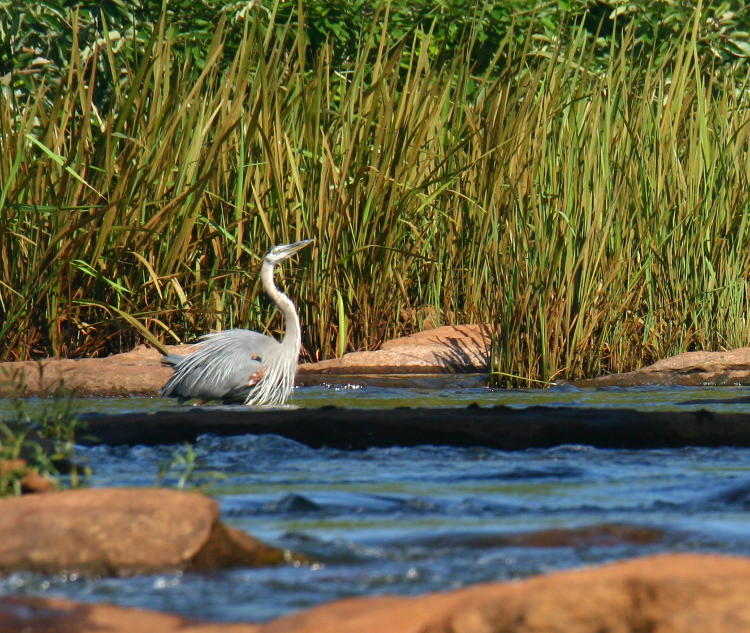
Both of these, by the way, are cropped tighter from the original frames – the herons really were some distance off, more than a hundred meters away. At least we had a good light angle on them – for the most part, anyway. As one took a short flight across a narrow stretch of deeper water, it showed that there were still some patches of shadow. Really, I have to believe this was on purpose.
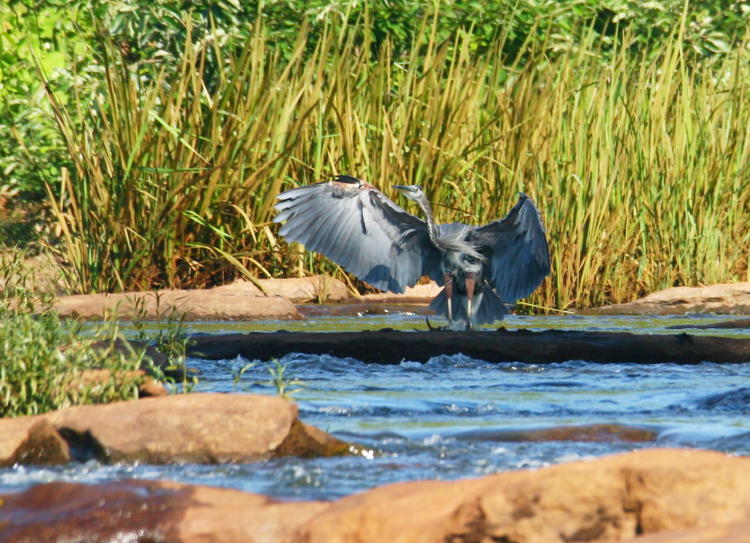
Fartistic poses are all well and good, but I’m always after behavior, and so I tracked this one during its short flight and did a sequence of the landing. The wings are pretty dynamic here, but I wish I’d been closer, with less shadow.

And then – wait. How, exactly, did the bird produce such a big splash for what should have been a landing on either a protruding rock (of which there were plenty) or at most a few centimeters of shallow water? I’m inclined to say that it struck the water with one wing, which seems odd because, as large as they are, these are not clumsy birds. Under the surface, the rocks in the areas get covered with a fine layer of silt and algae, which I can attest is an extremely slippery concoction, but I’m sure the birds have a lot more epxerience with this than I do. I never even saw this happen in the viewfinder, but then again, as the sequence was firing off the mirror was only in position to show me the gaps between frames for tiny fractions of a second, so this isn’t surprising.
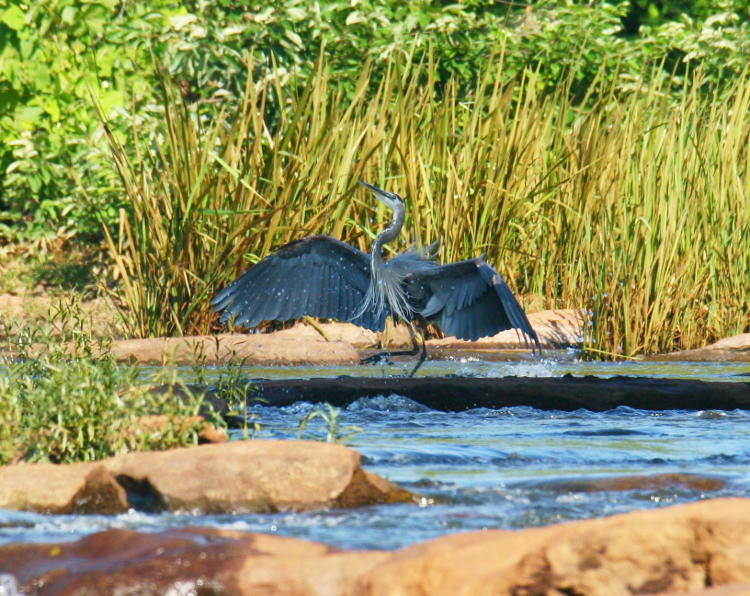
Still a few drops of water in the air betraying the heron as it tries to pretend that never happened. But notice the contrast of the dark band cutting across the scene, indicating that the heron chose the one rock in the entire river that actually fell into shadow, which of course reduced the detail and clarity of the resulting pics. Naturally. Did either of the two herons that we saw in the same location decide to come closer or make for better pictures? They did not.
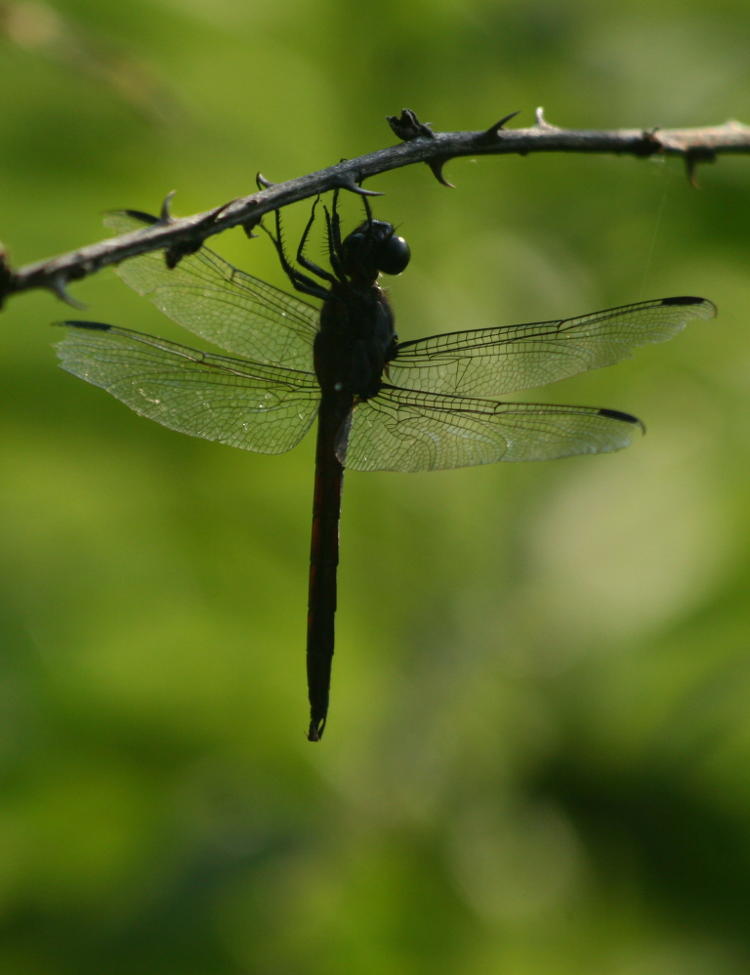
Much the same could be said for this dragonfly a couple of days later, still not stirring from its overnight sleeping spot. The undergrowth prevented getting a better sun angle, but it was a largely dark species anyway, so we’ll have to be content with a silhouette and a single bright spot on the compound eye. This wasn’t the best of spots for the dragonfly, because they need a lot of warmth for their wing muscles to work, which is why they perch primarily in bright sunlight. This one was still sluggish while others, smart enough to catch the morning sun early on, were already zooming around.
So now we see the other side of the coin.
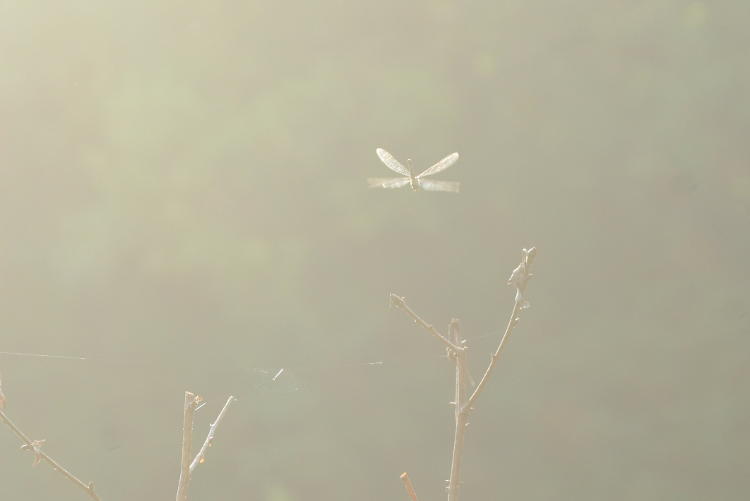
This one was flitting away from its perch after prey before returning to the same spot, and clearly it’s getting as much sunlight as it can – and so was my lens. The Mamiya 80mm macro has a deep aftermarket hood that remains attached, and is recessed enough on its own, but there are still conditions where sunlight can make its way to the front glass element, and when it does, it’s noticeable. While pretty well-corrected against ghosts and internal reflections, nonetheless it has a glare problem, which is what produced this horribly washed-out appearance. It’s why I always recommend a lens hood when shooting in sunlight, even when you’re not expecting to be facing into the light, because it’s not hard to find a subject that forces that perspective, and even reflections from water can throw some glare. It was readily visible through the viewfinder, however (which is good – often, ghosts never show until the final image since they’re affected by the aperture,) and so I was able to correct it fairly simply.

World of difference between the two frames, right? And all it took was holding out my hand to shade the lens better. There was a balance point between it blocking the sunlight and actually getting into the frame, but that’s what expert nature photographers can accomplish, donchaknow.
Now if I could only get some photos that were artistic or something…
I have a few other posts lined up, but they’re more philosophical that photographic, and either way my time this week isn’t looking too promising, at least until later. We’ll see what transpires.




















































